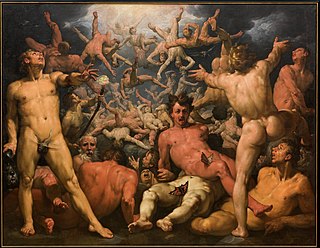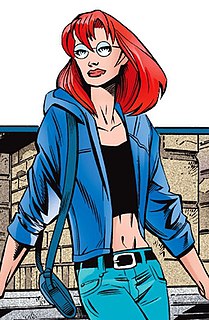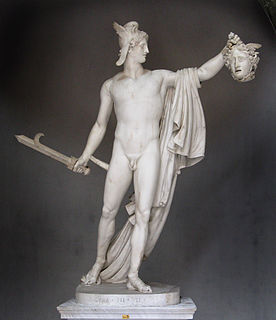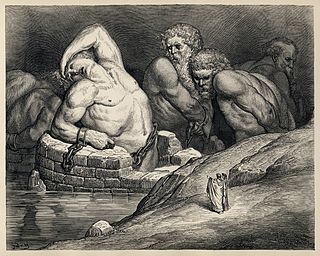Atlas is the name of different characters appearing in Marvel Comics. Erik Josten is the most notable of the known characters that used the name Atlas while another character is an adaption of the Titan of the same name.
Atlas is the name of different characters appearing in Marvel Comics. Erik Josten is the most notable of the known characters that used the name Atlas while another character is an adaption of the Titan of the same name.
Erik Josten used the Atlas alias during his time as a member of the Thunderbolts. [1]
Steve Rand is an actor who is the star of a popular sword-and-sandals film. He was considered the most handsome actor in all of Hollywood. While working in the film Atlas and Bathsheba, Steve met his stunt double named Jimmy where Steve insisted on doing his own stunts like the one that involved him swinging over a flaming pit. Despite Jimmy's warnings, Steve went ahead with the stunt where it went horribly wrong where the accident disfigured him. Upon becoming delusional five years later, Steve Rand began to think he was Atlas and started targeting anyone that was involved in the production of Atlas and Bathsheba where he used the jawbone of a donkey to kill them. After killing five people, Atlas confronted the film's producer Simon Kolb. Upon unmasking himself to Kolb, Atlas killed him. Then he was attacked by Werewolf by Night and held his ground against him where he thought that Werewolf by Night was Jimmy and defeated him. After killing the leading lady for Atlas and Bathsheba, Atlas confronted the film's screenwriter Buck Cowan only to be confronted by Werewolf by Night where Atlas thought he was Jimmy. Their fight went from Hollywood Boulevard to Mann's Chinese Theatre. Before Atlas could kill Werewolf by Night, Buck used the gun Jack Russell gave him to shoot Atlas in the back causing him to fall face-first into the wet cement that an unidentified celebrity was going to put their hands in later on which led to Atlas' death. [2]
Atlas is one of the Titans. He took a lesser goddess named Pleione as his wife. When it came to the Titanomachy, Atlas sided with his father Cronus in his fight against Zeus. While most of the Titans that were on Cronus' side were imprisoned in Tartarus, Atlas was condemned by Zeus to hold up the heavens. His location was at the Atlas Mountains in what would be Morocco. When Perseus neared his location after slaying Medusa, Atlas tried to warn Perseus to not take the apples of the Hesperides only for Perseus to use Medusa's head to turn him to stone. [3] Atlas was restored to normal two generations later where he had his encounter with Hercules who asked for his help in obtaining the Golden Apples. While Atlas obtained the apples, he planned to leave Hercules to take over only for Hercules to trick Atlas into holding the clouds again. [4] [3] [5]
The Axis Mundi that Atlas was positioned somehow shifted to Washington, D.C. as Atlas still held up the heavens. On September 18, 1793, Atlas appeared to George Washington when he made Washington, D.C. the capital of the United States of America. In the present, Artume freed Atlas from his fate using the Omphalus in exchange for revenge on Hercules. Using the Washington Monument, Atlas attacked Hercules only to be defeated by him and Namora. [6]
Erik Josten's ionic form later possessed Dallas Riordan which empowered her with the ionic energy, enabling her to operate as Atlas for a short time. [7]

In Greek mythology, the Titans were the pre-Olympian gods. According to the Theogony of Hesiod, they were the twelve children of the primordial parents Uranus (Sky) and Gaia (Earth), with six male Titans—Oceanus, Coeus, Crius, Hyperion, Iapetus, and Cronus—and six female Titans, called the Titanides or "Titanesses" —Theia, Rhea, Themis, Mnemosyne, Phoebe, and Tethys. Cronus mated with his older sister Rhea, who then bore the first generation of Olympians: the six siblings Zeus, Hades, Poseidon, Hestia, Demeter, and Hera. Certain descendants of the Titans, such as Prometheus, Helios, and Leto, are sometimes also called Titans.

Man-Killer is a supervillain appearing in American comic books published by Marvel Comics. Critics have called her a "caricature of feminists, who despised all men."
The Scourge of the Underworld is the name of a series of fictional characters appearing in American comic books published by Marvel Comics.

The Thunderbolts are a fictional antihero team appearing in American comic books published by Marvel Comics. The team consists mostly of reformed supervillains.

Zeus is a fictional deity, appearing in American comic books published by Marvel Comics. The character is based on the god Zeus in Greek mythology.

The Werewolf by Night is the name applied to two fictional characters who are werewolves appearing in American comic books published by Marvel Comics. The Werewolf by Night first appeared in Marvel Spotlight #2.

Erik Josten, also known as Power Man, Smuggler, Goliath and Atlas, is a fictional character appearing in American comic books published by Marvel Comics. The character has been a prominent member of both the Masters of Evil and the Thunderbolts.

Hercules is a character appearing in American comic books published by Marvel Comics. Debuting in the Silver Age of Comic Books, the character is based on Heracles of Greek mythology. Since his first appearance, he has been a perennial member of the superhero team the Avengers.
Smuggler is a fictional character, a superhero appearing in American comic books published by Marvel Comics.

Dallas Riordan is a fictional character appearing in American comic books published by Marvel Comics. She first appeared in Thunderbolts #1.

Man Mountain Marko is a Marvel Comics supervillain. Marko was and remains an affiliate of numerous organized-crime entities in the Marvel universe, including the Maggia.

Hercules and Xena – The Animated Movie: The Battle for Mount Olympus is a 1998 American animated action-adventure direct-to-video film starring the voices of Kevin Sorbo, Lucy Lawless, Michael Hurst, Renee O'Connor, Kevin Smith, and Alexandra Tydings, all reprising their roles from the two live-action/special effects television series, Hercules: The Legendary Journeys and Xena: Warrior Princess. In the film, Zeus' wife Hera releases the four Titans after eons of imprisonment in a fit of jealousy, prompting Hercules and Xena to join forces and stop her. The film was produced and directed by Lynne Naylor and written by John Loy. It later received a television airing on Fox's Fox Kids block.

Helmut Zemo is a fictional character appearing in American comic books published by Marvel Comics, most commonly as an adversary of the superhero Captain America and the Avengers. He is the son of Baron Heinrich Zemo and the thirteenth Baron Zemo in his family lineage. The character first appeared in Captain America #168 and was created by Roy Thomas, Tony Isabella and Sal Buscema.

Dr. Karl Malus is a fictional mad scientist and criminal appearing in American comic books published by Marvel Comics. He played a part in the origins of Armadillo, Hornet, Falcon II, and many other characters.

The harpē (ἅρπη) was a type of sword or sickle; a sword with a sickle protrusion along one edge near the tip of the blade. The harpe is mentioned in Greek and Roman sources, and almost always in mythological contexts.

Amadeus Cho, also known as Brawn, is a superhero appearing in American comic books published by Marvel Comics. Created by American writer Greg Pak and Canadian artist Takeshi Miyazawa, the character first appeared in Amazing Fantasy vol. 2 #15. Cho usually appears in books featuring the Avengers or individual members of that group, such as the Hulk or Hercules.
Prometheus is the name of two fictional characters appearing in American comic books published by Marvel Comics. The first one is based on the Greek Titan of the same name while the second one is member of the Pantheon.

Delphyne Gorgon is a fictional character appearing in American comic books published by Marvel Comics. A Gorgon member of the Amazon nation, she is a love interest of Amadeus Cho. She first appeared in The Incredible Hercules #121, and was created by Greg Pak, Fred Van Lente, and Clayton Henry.

The familiar name and large size of the Titans have made them dramatic figures suited to market-oriented popular culture.
Goliath is a superhero comic book identity in Marvel Comics.